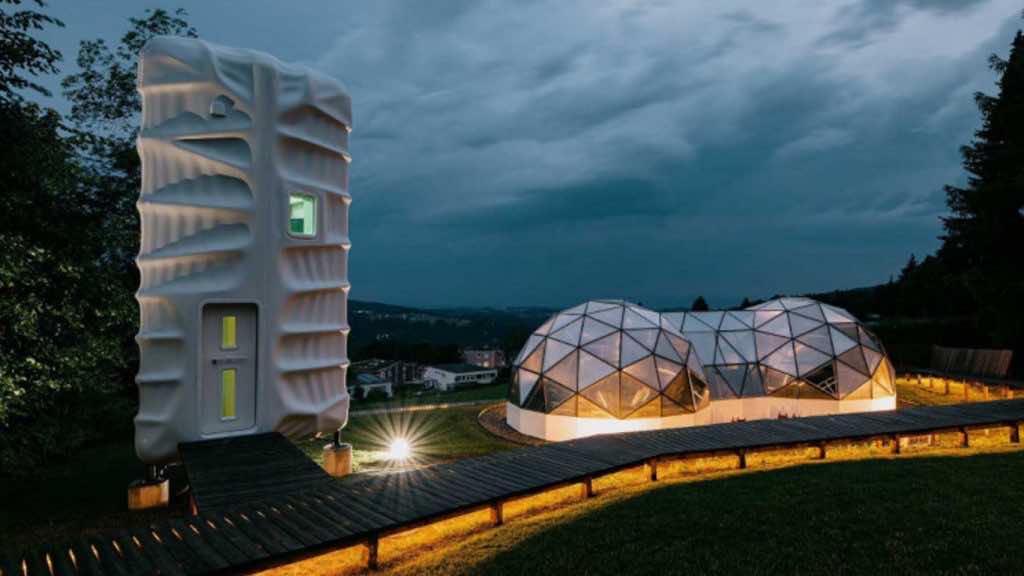Danish architecture firm SAGA Space Architects worked with students between the ages of 6 and 18 at the Institut auf dem Rosenberg to build a Starship-ready space habitat.
The Institut auf dem Rosenberg is a Swiss boarding school it is aimed to encourage students for designing new space innovations.
Following years of work on the project, the space habitat prototype can now be seen at a Swiss experimental park, a press statement explains.
The structure is a three-story building with multiple workstations for astronauts along with rest areas. On Wednesday, July 20, it was revealed as it was timed to align with the 53rd anniversary of the Apollo 11 moon landing.
The prototype’s impressive 23-foot (7-meter) stature makes it the world’s tallest 3D-printed polymer structure.
According to the institute, students will complete “immersive learning modules” inside the habitat. “Our aim is to provide future leaders with early exposure to the question of advanced space exploration, allowing our students to approach and solve … complex questions from a collaborative and holistic point of view,” Bernhard Gademann, director general of Rosenberg, said in the statement.
The Rosenberg Space Habitat is the result of two years of work starting from “initial creative concepts and paper models”, the institute explained. The 3D-printed outer shell was made by a partner company from Milan, Camozzi, while the interior structure was built by Ingersol in Copenhagen.
The team decided to use polymer due to the fact it “provides more versatility than concrete that is used in most 3D printed structures.” The material also features a UV stabilizer to make it more durable against the high ultraviolet radiation on the moon and Mars.
The institute explains that students will participate in projects to investigate “human well-being, using facilities to test hardware and software tools and applications and to develop monitoring tools for remote mission control systems. Learners will also explore the importance of sensory stimulation in remote living environments with light, sound, and smell installations.”
The Rosenberg Space Habitat is developed to serve as a learning environment for students that will help them get familiar with new technologies and inspire them to design innovations for the next generation of space explorers.

